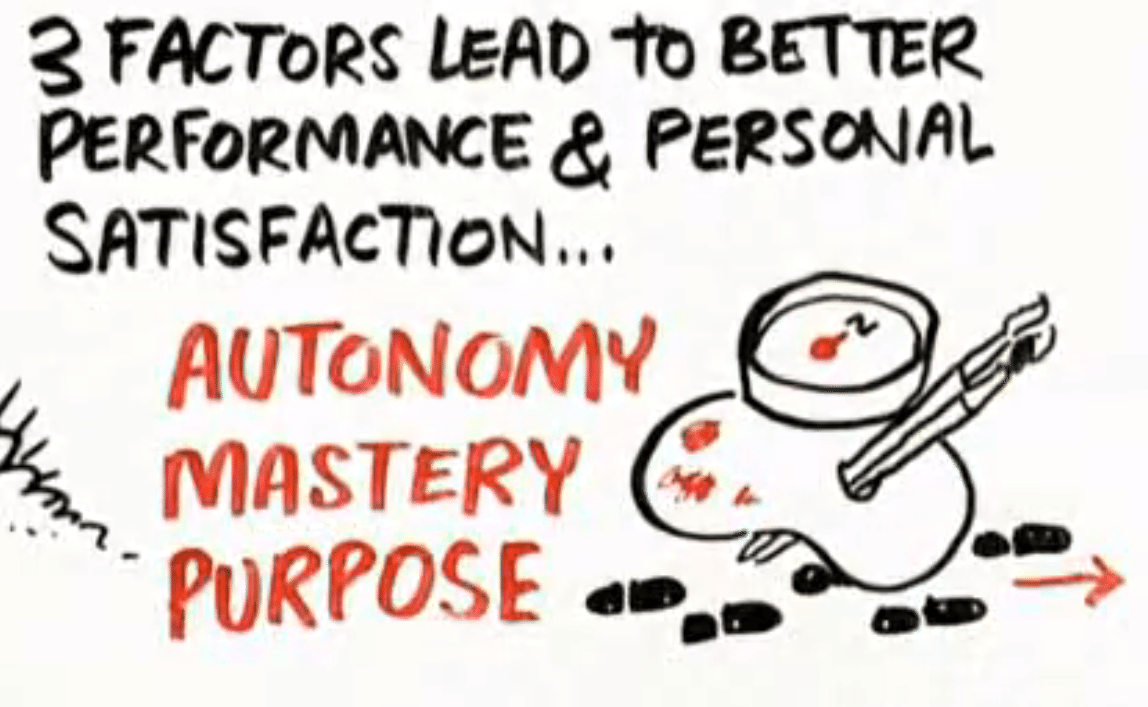The following post is a guestpost by Walter Chen, founder of a unique new project management tool IDoneThis. More about Walter at the bottom of the post.

So, here is the thing right at the start: I’ve always been uncomfortable with the traditional ideal of the professional — cool, collected, and capable, checking off tasks left and right, all numbers and results and making it happen, please, with not a hair out of place. An effective employee, no fuss, no muss, a manager’s dream. You might as well be describing an ideal vacuum cleaner.
I admit that I’ve never been able to work that way. There is one thing that always came first and most importantly for me: How am I feeling today? I found that it can easily happen to think of emotions as something that gets in the way of work. When I grew, I often heard that they obstruct reasoning and rationality, but I feel that we as humans can’t shut off our humanness when we come to work.
Feelings provide important feedback during our workday. It doesn’t make sense to pretend that it’s best or even possible to keep our emotions and work separate, treating our capacity for emotion and thought as weakness. I wanted to look into whether there was anything besides a gut feeling to my suspicions behind keeping the head and the heart separate in business.
What does emotion have to do with our work?
It turns out, quite a lot. Emotions play a leading role in how to succeed in business because they influence how much you try and this is widely misunderstood by bosses and managers.
Psychologists Teresa Amabile and Steven Kramer interviewed over 600 managers and found a shocking result. 95 percent of managers misunderstood what motivates employees. They thought what motivates employees was making money, getting raises and bonuses. In fact, after analyzing over 12,000 employee diary entries, they discovered that the number one work motivator was emotion, not financial incentive: it’s the feeling of making progress every day toward a meaningful goal. In Fact, Dan Pink found that actually the exact oposite is true:
“The larger the monetary reward, the poorer the performance. – money doesn’t motivate us, at all, instead emotions do.”
In the famous expriment by Dr. Edward Deci clarified again whether emotional feedback or money would engagement with work. People were sitting in a room and tried to solve a puzzle while Deci measured how much time they put in, before giving up. For Group A, he offered a cash reward for successfully solving the puzzle, and as you might expect, those people spent almost twice as much time trying to solve the puzzle as those people in Group B who weren’t offered a prize.
A surprising thing happened the next day, when Deci told Group A that there wasn’t enough money to pay them this time around: Group A lost interest in the puzzle. Group B, on the other hand, having never been offered money in exchange for working on the puzzles, worked on the puzzles longer and longer in each consecutive session and maintained a higher level of sustained interest than Group A. So if it not money what else really motivates us?
The 3 real reasons that motivate us to work hard every day
Pink explains further that there are in fact just 3 very simple things that drive nearly each and everyone of us to work hard:
- Autonomy: Our desire to direct our own lives. In short: “You probably want to do something interesting, let me get out of your way!”
- Mastery: Our urge to get better at stuff.
- Purpose: The feeling and intention that we can make a difference in the world.
If these three things play nicely together, Amabile and Kramer called this the somewhat obvious “inner work life balance” and emphasize its importance to how well we work. Inner work life is what’s going on in your head in response to workday events that affects your performance.
The components of the inner work life — motivation, emotions, and perceptions of how the above three things work together — feed each other. So ultimately our emotional processes ultimately our motivation to work. They end up being the main influencer of our performance.
Deci’s experiment showed that payment actually undermined intrinsic motivation because such external rewards thwart our “three psychological needs — to feel autonomous, to feel competent and to feel related to others.” As he told BBC.com, “You need thinkers, problem solvers, people who can be creative and using money to motivate them will not get you that.”
What’s going on inside our brains that connects our emotions to motivate you as a thinker and problem solver?
Amabile and Kramer tell us this:
“depending on what happens with our emotions, motivation for the work can skyrocket or nosedive (or hardly shift at all).”
So how does our brain deal with emotion and connect it to such practical results like motivation and productivity? Well, the ironic part is that the parts of the brain that deal with emotions are actually connected to those that deal with cognition. Richard J. Davidson explains how emotional and cognitive functions interrelate. To get all “brainy” with this:
The brain connection of cognition and emotion is not segregated. The idea is that your “limbic system” is the seat of emotion […] and it is critical for your cognitive processes (e.g., the hippocampus for memory).
Emotions are wired straight into our thinking and cognitive functions such as memory, attention, and reasoning.
Let’s switch this around. We know what happens if we positively affect our emotions. But what about the other way round? Famous psychologist Alice Isen found that positive moods facilitate creative problem-solving. Negative emotions, on the other hand, lead us to think more narrowly:
“Negative emotions like fear and sadness can lead to brain activity and thought patterns that are detrimental to creative, productive work: (a) avoidance of risk; (b) difficulty remembering and planning; and (c) rational decision-making.”
Personally, I found this particularly interesting. I always had a good hunch that positive thinking will improve my daily performance. The impact of negative emotions was never that clear and gives me a lot to think about working hard on limiting these emotions.
3 Most important things to improve your inner work life and manage your motivation:
Yes, it’s done! With the knowledge about the impact of a positive inner work life and our emotions’ connection to great performance, I think we win the battle against the reserved, rational robot.
The key takeaway here for me is to pay more attention to our emotions and thoughts. It’s simple, we use them to be more awesome at what we do. Following on from the studies above, the following three main actions have proven the best results for keeping our emotions and positive thinking the highest:
- Exercise – How to get started and why: We’ve discussed before in detail how exercise makes us happier. Any work-out will automatically release mood-enhancing chemicals and endorphin into your blood. This can immediately lift your mood and lowering stress. Exercise and maintenance of our physical health boosts our emotional health. The hard part here is of course how to get started with an exercise habit. Whatever it is you want to get into, the key is to start with easier task than you could actually do. Yes, that’s right. If you feel comfortable lifting 10kg, make it 5. The art is in the start as this post found.
- Set yourself up for success – here is how: Amabile and Kramer’s most important finding is that making progress at work is the main way to fuel positive inner work life. Making progress is easier said than done but breaking it down to ask what will facilitate progress can be helpful. Identify barriers and remove them, whether it’s too many meetings or micromanagement. Identify facilitators and implement or improve them, such as better communication or increased autonomy. The feeling of progress triggers the emotions and brain activity that result in creativity and your best work.
- Reflect and review through work diaries: Pay careful attention to your inner work life by writing down thoughts and feelings about your workday in a work diary by yourself or with your team using a tool like iDoneThis. A regular practice of reflection helps you recognize patterns, gain insight about your work and work relationships, celebrate and appreciate achievements and gestures, and puzzle out what helps and hinders progress. Journaling itself will improve your inner work life, lifting your emotions and aiding cognitive processing and adaptation. Take ten minutes out of your day to reflect, vent, and celebrate.
Quick last fact: Emotions are the key driver to make your daily decisions
Here is an interesting last fact for you. Making decisions is all about our intellectual capability, right? I thought so too, turns out, that’s completely wrong. In an experiment by Antonio Damasio, named Descartes’ Error he discovered that the key element for making daily decisions is to have strong emotional feelings:
“One of Damasio’s patients, Elliot, suffered ventromedial frontal lobe damage and while retaining his intelligence, lost the ability to feel emotion. The result was that he lost his ability to make decisions and to plan for the future, and he couldn’t hold on to a job.”
The way our brains are built make it necessary that emotions “cloud” our judgment. Without all that cloudy emotion, we wouldn’t be able to reason, have motivation, and make decisions.
Of course, I am sure that you have tons more insights into how you manage your own work-life balance and which things help you to stay motivated every day. What have you found to be your main driver to get up for work every day? Do you think some of the new habits mentioned above could be useful? I’d love your thoughts in the comments.
Photocredit: opensourceway
About the author: Walter Chen is the co-founder of iDoneThis, a simple way to preserve and celebrate progress at work, every day, that amazing companies like Zappos, Shopify, and reddit use. He’d love to hear from you on Twitter at @smalter.
Try Buffer for free
190,000+ creators, small businesses, and marketers use Buffer to grow their audiences every month.
